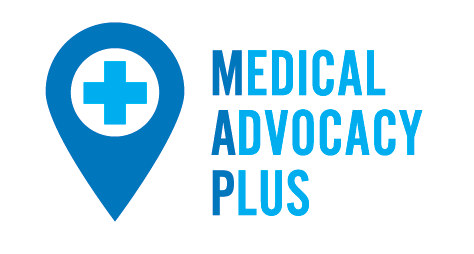23 Apr Do You Believe Your Health Is At Risk? Take a Sneak Peak How to Improve Patient Safety Navigating the Complexities of Patient Advocacy
Introduction: In patient advocacy, thoroughness ensures the best possible outcomes for those we serve. One critical aspect is the comprehensive review of a patient’s medical history and records. When I begin a new case and onboard a client, one of my priorities is to meticulously examine their medical background to gain insight into their recent and past medical issues. This process involves carefully reading progress reports, physician summaries, and other pertinent medical documentation, focusing on the most current information that provides recommendations for ongoing care.
Today, we delve into the gritty reality of “Wayne’s” experience—an 88-year-old man facing the daunting challenges of paralysis and cancer. As we dissect his journey, we uncover crucial lessons about proactive intervention and thorough medical oversight.
The Rough Terrain: Picture Wayne, an independent living senior who is suddenly thrust into a whirlwind of medical challenges, confronting the aftermath of metastatic prostate cancer, which manifested as a spinal cord tumor, leaving him paralyzed from the waist down. Under the guidance of his medical power of attorney (POA), Wayne embarked on a turbulent journey through various hospitals and care facilities.
Despite the best efforts of his POA (a gracious neighbor), Wayne’s path was fraught with pitfalls. Critical medical information fell through the cracks, leading to delays in essential treatments. Overwhelmed and struggling to navigate the complexities of Wayne’s care, she found herself hanging on by a thread, reacting to crises as they arose. Furthermore, there was a missed opportunity for intensive rehabilitation that could have significantly improved Wayne’s mobility and quality of life.
The subpar care became painfully evident when Wayne, due to inadequate rehabilitation options (another consequence of the issues with transitions of care), developed a stage 4 decubitus ulcer (bed sore), necessitating another hospitalization and surgery. Despite the efforts of Wayne’s medical POA and the staff, his journey remained challenging.
It’s important to note that I wasn’t involved early in Wayne’s journey. Although the POA initially contacted me, a few weeks lapsed before she took action to engage my services. This delay highlighted the critical importance of prompt intervention and comprehensive assessments.
Upon being engaged by the medical power of attorney (POA), I immediately delved into Wayne’s medical care journey. As I meticulously reviewed his medical history reports, physician summaries, diagnostic reports, and care plans, I realized that certain aspects of his care had been overlooked, leading to additional challenges. Despite his discharge with recommendations and treatment plans, the lack of follow-ups and necessary adjustments exacerbated Wayne’s delicate health condition. The complexities of insurance and the deterioration of his wound care plan posed obstacles in securing appropriate home health services for Wayne, resulting in compromised wound care. Furthermore, the discovery of an aortic aneurysm in his medical chart added further complexity to his case. Despite these challenges, I remained dedicated to advocating for Wayne’s complex needs, although obstacles persisted in obtaining the necessary support.
Wayne’s journey took another turn when he was readmitted to the hospital for worsening wound care, marking his third hospitalization. Requiring six weeks of intravenous antibiotics to address the infection, Wayne was subsequently discharged to a skilled nursing facility that finally provided appropriate care. However, given the progression of his cancer and quality of life issues, Wayne ultimately opted for hospice care. Throughout his journey, Wayne remained a person with paraplegia, navigating the challenges with resilience. One positive outcome of this situation was that I had the opportunity to educate the medical (POA) on various aspects, including insurance processes, transitions in care, medical terminology, and more. This knowledge equipped her to advocate for Wayne more effectively and confidently navigate the complexities of his medical journey.
Wayne’s experience underscores the critical importance of early and informed advocacy in navigating the healthcare system. These issues emphasize advocates’ need to prioritize comprehensive assessments early on, ensuring better outcomes for our clients.
Lessons Carried Forward: Wayne’s journey serves as a stark reminder of the imperative of early involvement and thorough medical examination in patient advocacy. Reflecting on this, I realize the importance of more effort to engage the client sooner, particularly in complex cases. Prioritizing comprehensive assessments and proactive intervention could have alleviated some of Wayne’s struggles.
Conclusion: As we dissect Wayne’s story, let’s absorb its lessons and carry them forward in our advocacy endeavors. Despite Wayne’s challenges, his journey underscores the importance of diligence and unwavering commitment in navigating the healthcare maze with clarity and purpose. Moving forward, let us strive to ensure that every patient receives the attention and care they deserve.
*Note: Wayne’s name has been changed to protect his privacy and confidentiality.

